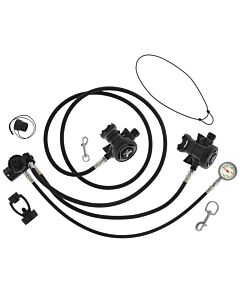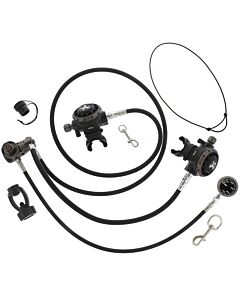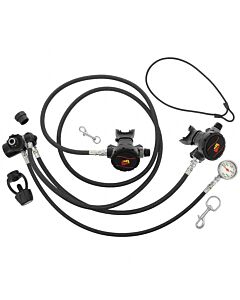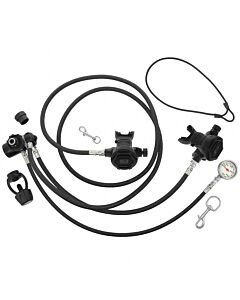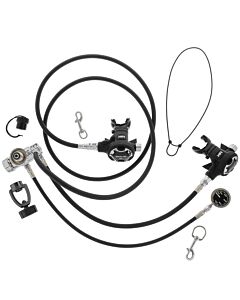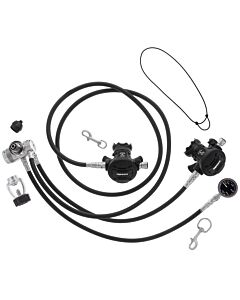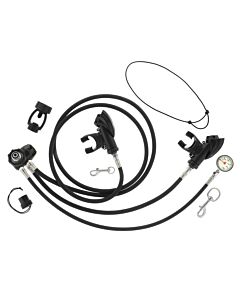Long Hose
Long Hose Regulator Configuration for Single Tank Diving
The traditionally configured sport diver uses an 'octopus' regulator setup. Over time, many experienced divers have come to believe this configuration has significant problems even for single tank diving. Key issues are that the backup second stage, on a {36 in | 91 cm} or perhaps { 40 in | 1 m } hose, is annoying to reliably stow, causes unnecessary drag, is difficult and time consuming to deploy, and the hose is often found to be too short in an emergency. Further, it's not unusual for the octopus to be clogged with silt or sand if not stowed carefully.
Today, many experienced divers prefer an alternative configuration to the single tank octopus. Overhead divers use a { 84 in | 2.1 m } hose and sport divers use a { 60 | 1.5 m } hose for their primary second stage, and put the backup second stage on a short { 22 in | 60 cm } hose hung on a necklace directly below their chin. In an emergency the primary second stage is donated with one hand while the backup is instantly available as a replacement using the other hand. With a bit of practice, some divers have even perfected a skill that allows them to retrieve the backup without using their hands at all!
The long hose routes down the divers right side behind their back, under their right arm, up and across the chest to the left shoulder, behind the neck and around to the mouth. The backup second stage has a short hose and hangs on a necklace directly below the chin. The high pressure hose for the SPG is shorter as well; routed straight down the divers left back side and the SPG is clipped to the waist D-ring. The BC inflation hose also a shorter length appropriate for the shorter BC inflation assembly found on back inflation wings.
